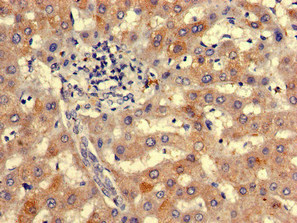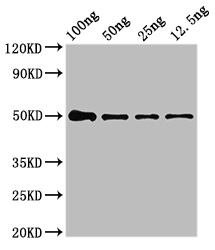The product CSB-PA750379LA01HU is a polyclonal antibody against the NIPBL protein. It is raised in the rabbit immunized by a partial recombinant protein mapping within amino acids 2523-2697 of human NIPBL protein. This NIPBL antibody is available as the unconjugated IgG isoform. It only shows reactivity with human NIPBL protein. It has undergone protein G purification and reaches over 95% in purity. Multiple and rigorous validations done in this NIPBL antibody demonstrated that it can recognize NIPBL protein in ELISA, IHC, and WB applications.
The target protein NIPBL plays a critical role in the recruitment of cohesin to chromatin by interacting with other chromatin-associated factors and facilitating the loading of cohesin onto DNA. NIPBL is also involved in the release of cohesin from chromatin during mitosis and meiosis by regulating the activity of separase, a protease that cleaves the cohesin complex. Mutations in the NIPBL gene can cause Cornelia de Lange syndrome, a rare genetic disorder characterized by developmental abnormalities and intellectual disability.








